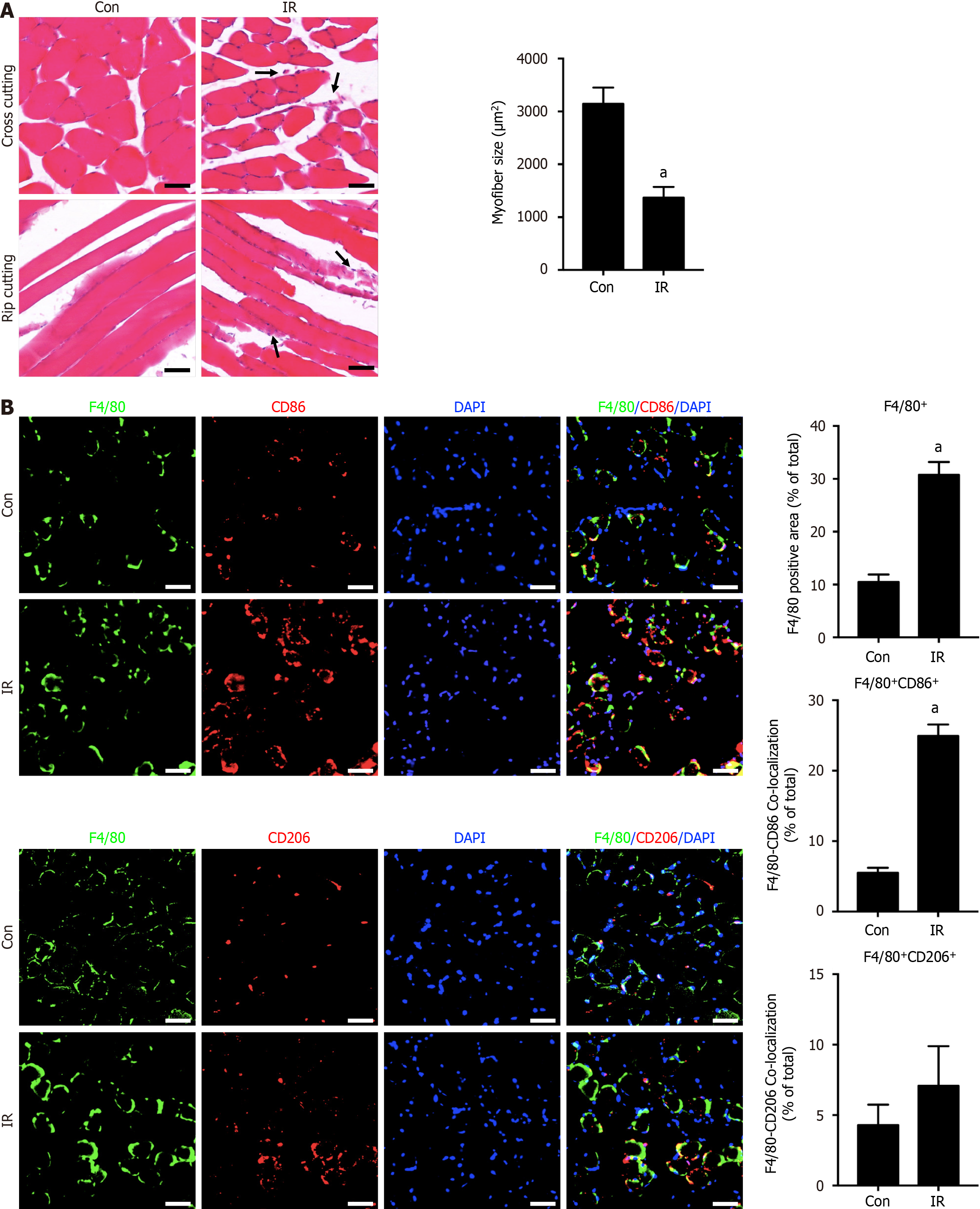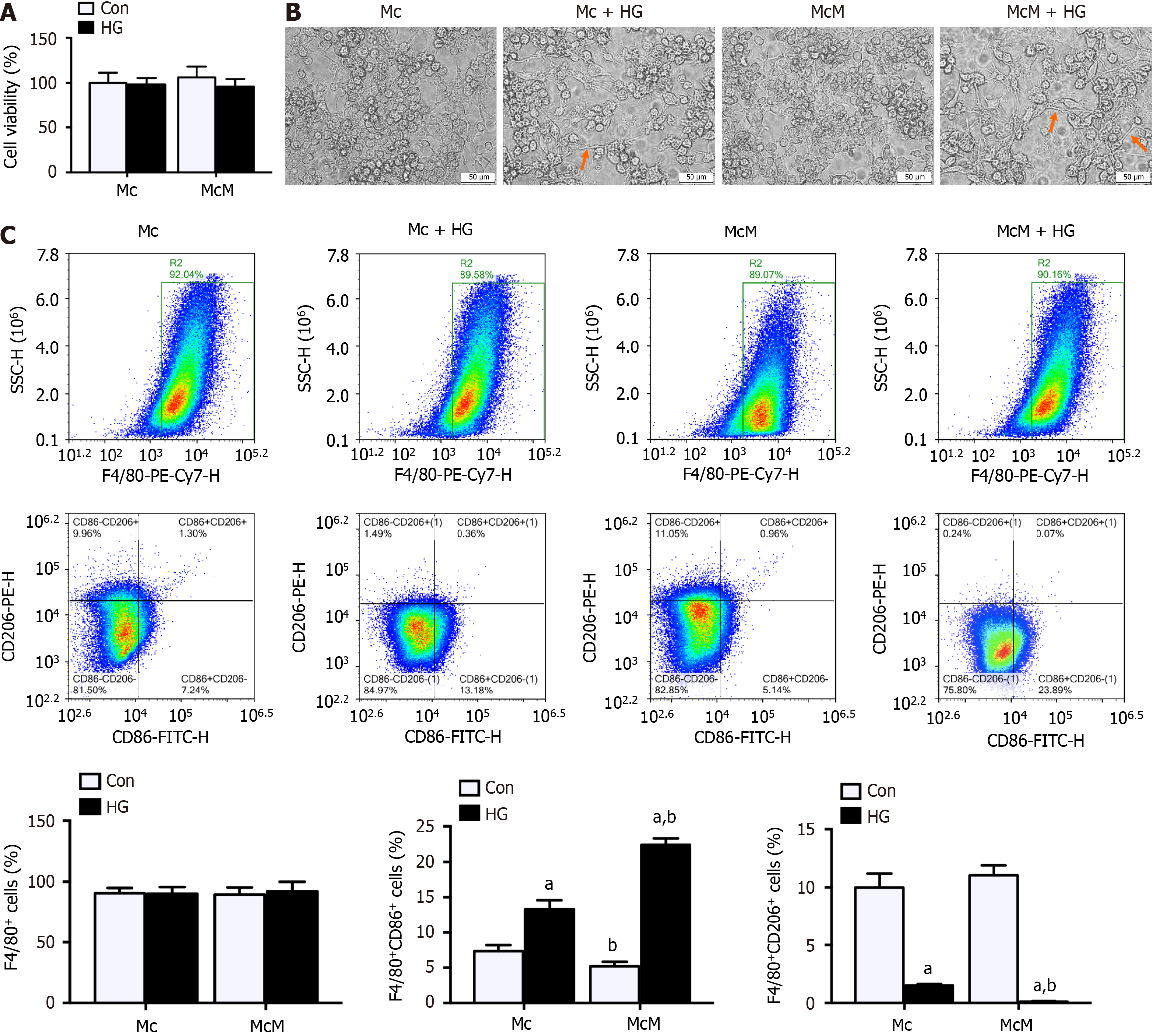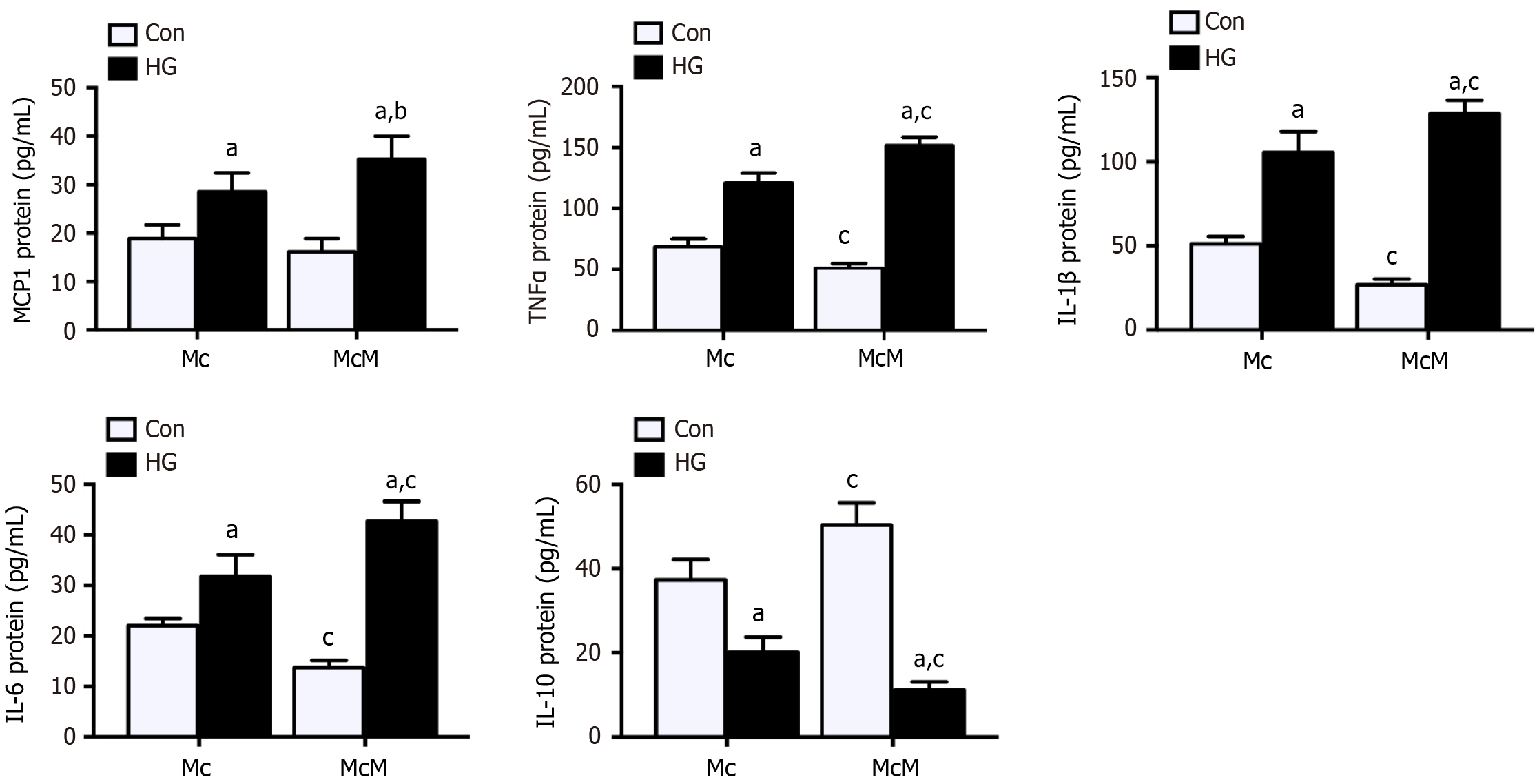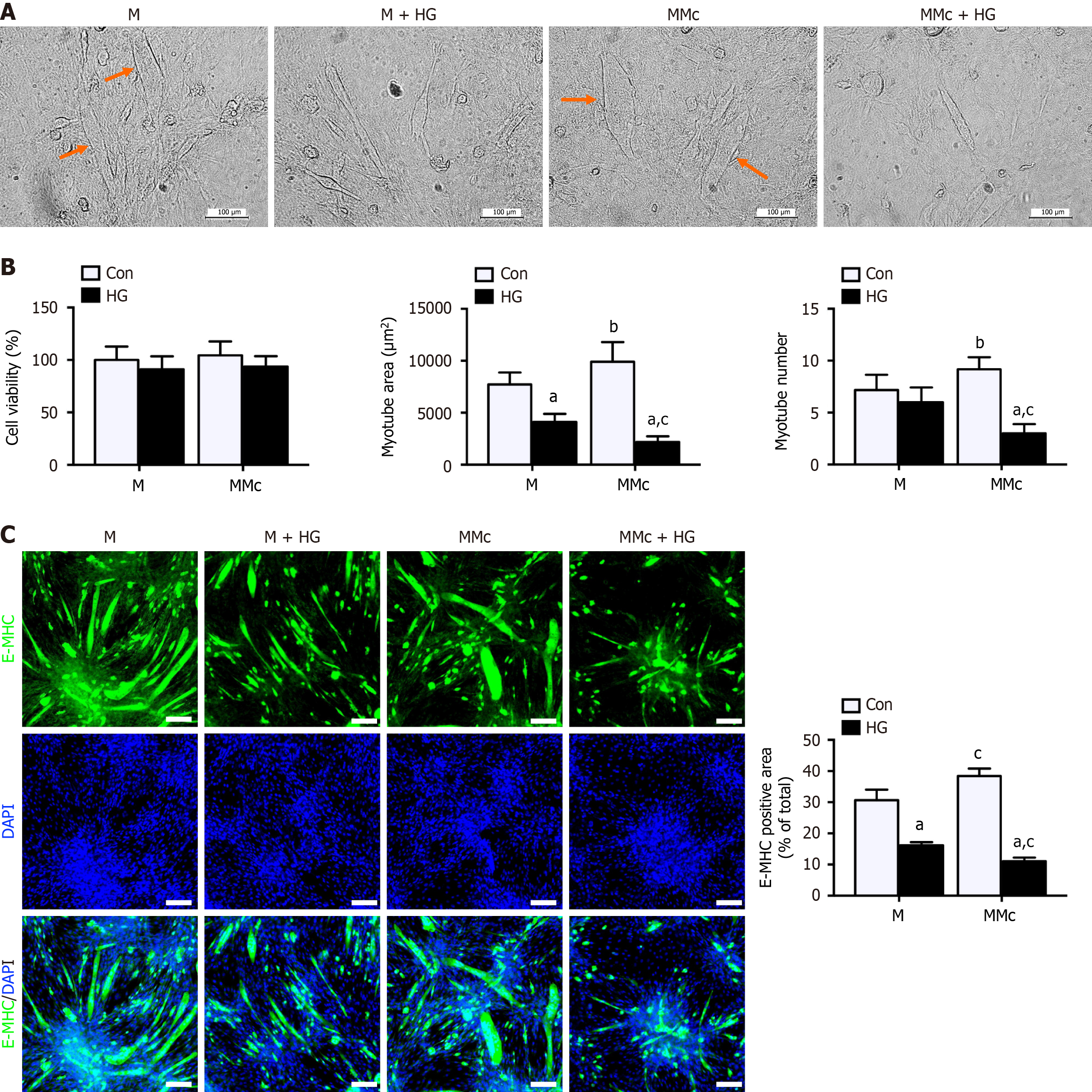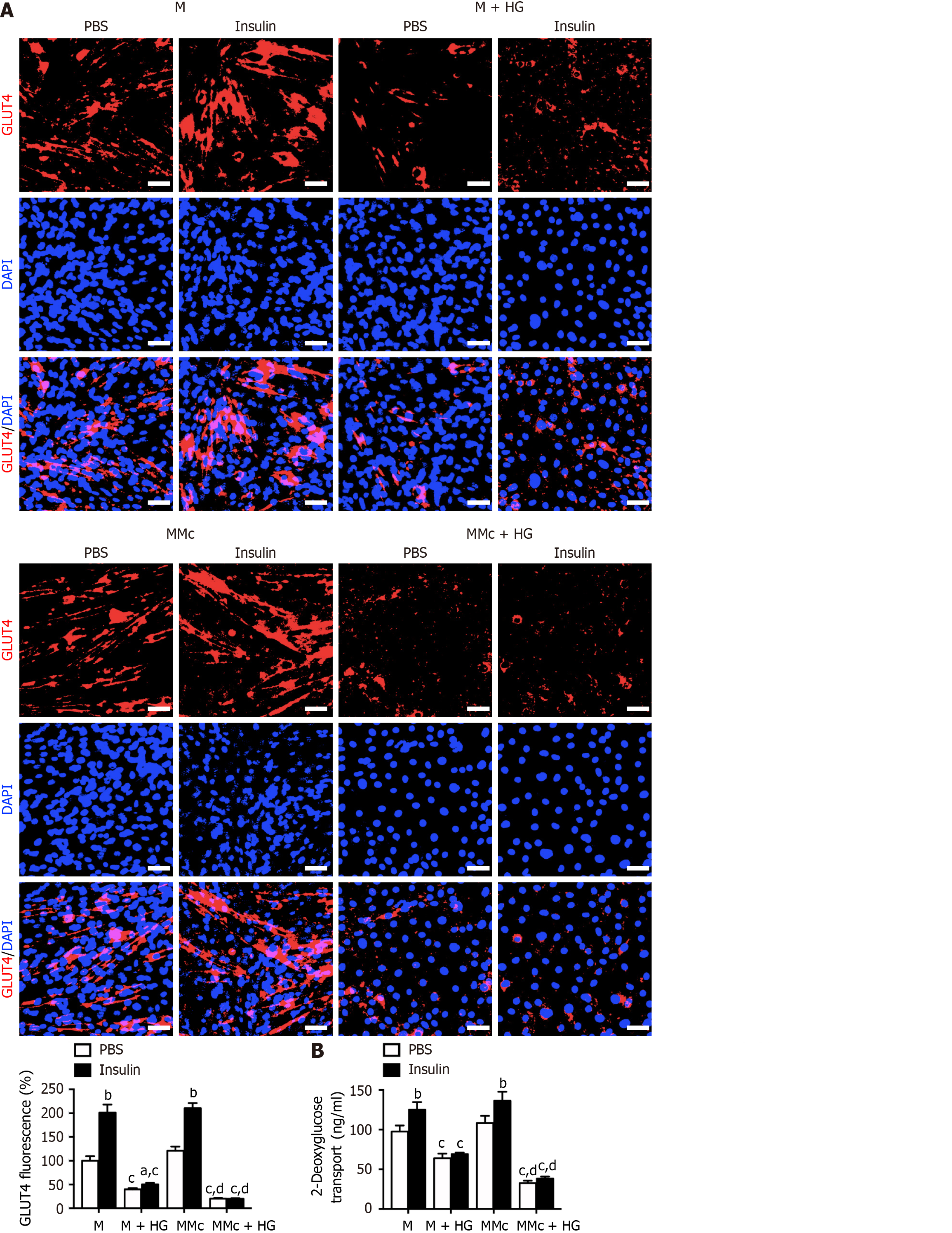Copyright
©The Author(s) 2024.
World J Diabetes. Jul 15, 2024; 15(7): 1589-1602
Published online Jul 15, 2024. doi: 10.4239/wjd.v15.i7.1589
Published online Jul 15, 2024. doi: 10.4239/wjd.v15.i7.1589
Figure 1 High-fat diet fed for 12 wk induces insulin resistance in mice.
A: Body weight development of control group (Con group) and insulin resistance (IR) group mice during 12 wk fed; B: Fasting blood glucose of Con and IR group mice during 12 wk fed; C: Fasting insulin levels of Con and IR group mice fed for 12 wk; D: Homeostasis model assessment of IR of Con and IR group mice fed for 12 wk; E: Triglyceride, total cholesterol, high density lipoprotein-cholesterol, and low density lipoprotein-cholesterol concentration in serum in Con and IR group mice fed for 12 wk; F: Blood glucose values during intraperitoneal glucose tolerance tests of Con and IR group mice fed for 12 wk; G: Blood glucose values during insulin tolerance tests of Con and IR group mice fed for 12 wk. Data are means ± SD, n = 6 per group. aP < 0.01 vs Con group. P values were calculated by two-tailed Student’s t-test. Con: Control group; IR: Insulin resistance group; ITT: Insulin tolerance test; GTT: Glucose tolerance tests.
Figure 2 Insulin resistance induced myofiber atrophy and pro-inflammatory M1 phenotype macrophages infiltration in skeletal muscle.
A: Hematoxylin eosin (H&E) staining of skeletal muscle and the areas of Myofiber (Scale bar: 50 μm); B: The expression of F4/80, and the co-localization of F4/80 with CD86 and CD206 respectively in skeletal muscle detected by Immunofluorescence (Scale bar: 50 μm). Data are means ± SD, n = 6 per group. aP < 0.01 vs Con group. P values were calculated by two-tailed Student’s t-test. Con: Control group; IR: Insulin resistance group.
Figure 3 Myoblast under high glucose milieus resulted in macrophages polarizing to pro-inflammatory M1 phenotype.
A: The viability of macrophages by CCK-8 assay; B: Representative image of macrophages by Light Microscopy, inflammatory phenotype in morphology were indicated with orange arrows (Scale bar: 50 μm); C: The ratios of F4/80+ cells, F4/80+CD86+ cells, and F4/80+CD206+ cells in macrophages by Flow Cytometry. Data are means ± SD, n = 6 per group. aP < 0.01 main effect of high glucose; bP < 0.01 main effect of co-cultured with myoblasts. P values were calculated by two-way analysis of variances. Mc: Macrophages; Mc + HG: Macrophages cultured in high glucose medium; McM: Macrophages co-cultured with myoblasts; McM + HG: Macrophages co-cultured with myoblasts in high glucose medium; HG: High glucose.
Figure 4 Interactions between myoblasts and macrophages under high glucose milieus resulted in chronic inflammation.
The protein levels of monocyte chemoattractant protein 1, tumor necrosis factor-α, inerleukin-1β (IL-1β), IL-6 and IL-10 in culture medium by enzyme-linked immunosorbent assay. Data are means ± SD, n = 6 per group. aP < 0.01 main effect of high glucose; bP < 0.05, cP < 0.01 main effect of co-cultured with myoblasts. P values were calculated by two-way analysis of variances. Mc: Macrophages; Mc + HG: Macrophages cultured in high glucose medium; McM: Macrophages co-cultured with myoblasts; McM + HG: Macrophages co-cultured with myoblasts in high glucose medium; HG: High glucose.
Figure 5 Inflammatory reaction induced by M1 macrophages inhibited myogenic differentiation and led to myotube atrophy.
A: Representative image of myotube by light microscopy, myotube were indicated with orange arrows (scale bar: 100 μm); B: The viability of myoblasts by CCK-8 assay; C: The ratios of E-MHC positive area in myotube by Immunofluorescence (scale bar: 50 μm). Data are means ± SD, n = 6 per group. aP < 0.01 main effect of high glucose; bP < 0.05, cP < 0.01 main effect of co-cultured with macrophages. P values were calculated by two-way analysis of variances. M: Myoblasts; M + HG: Myoblasts cultured in high glucose medium; MMc: Myoblasts co-cultured with macrophages; MMc + HG: Myoblasts co-cultured with macrophages in high glucose medium; HG: High glucose.
Figure 6 Inflammatory reaction induced by M1 macrophages impaired myotube insulin sensitivity.
A: The GLUT4 fluorescence of myotube in the absence or presence of 100 nmo/L insulin by Immunofluorescence (scale bar: 50 μm); B: The 2-Deoxyglucose transport of myotube in the absence or presence of 100 nmo/L insulin by glucose uptake assay. Data are means ± SD, n = 6 per group. aP < 0.05, bP < 0.01 main effect of insulin; cP < 0.01 main effect of high glucose; dP < 0.01 main effect of co-cultured with macrophages. P values were calculated by two-way analysis of variances. M: Myoblasts; M + HG: Myoblasts cultured in high glucose medium; MMc: Myoblasts co-cultured with macrophages; MMc + HG: Myoblasts co-cultured with macrophages in high glucose medium; HG: High glucose.
- Citation: Luo W, Zhou Y, Wang LY, Ai L. Interactions between myoblasts and macrophages under high glucose milieus result in inflammatory response and impaired insulin sensitivity. World J Diabetes 2024; 15(7): 1589-1602
- URL: https://www.wjgnet.com/1948-9358/full/v15/i7/1589.htm
- DOI: https://dx.doi.org/10.4239/wjd.v15.i7.1589










